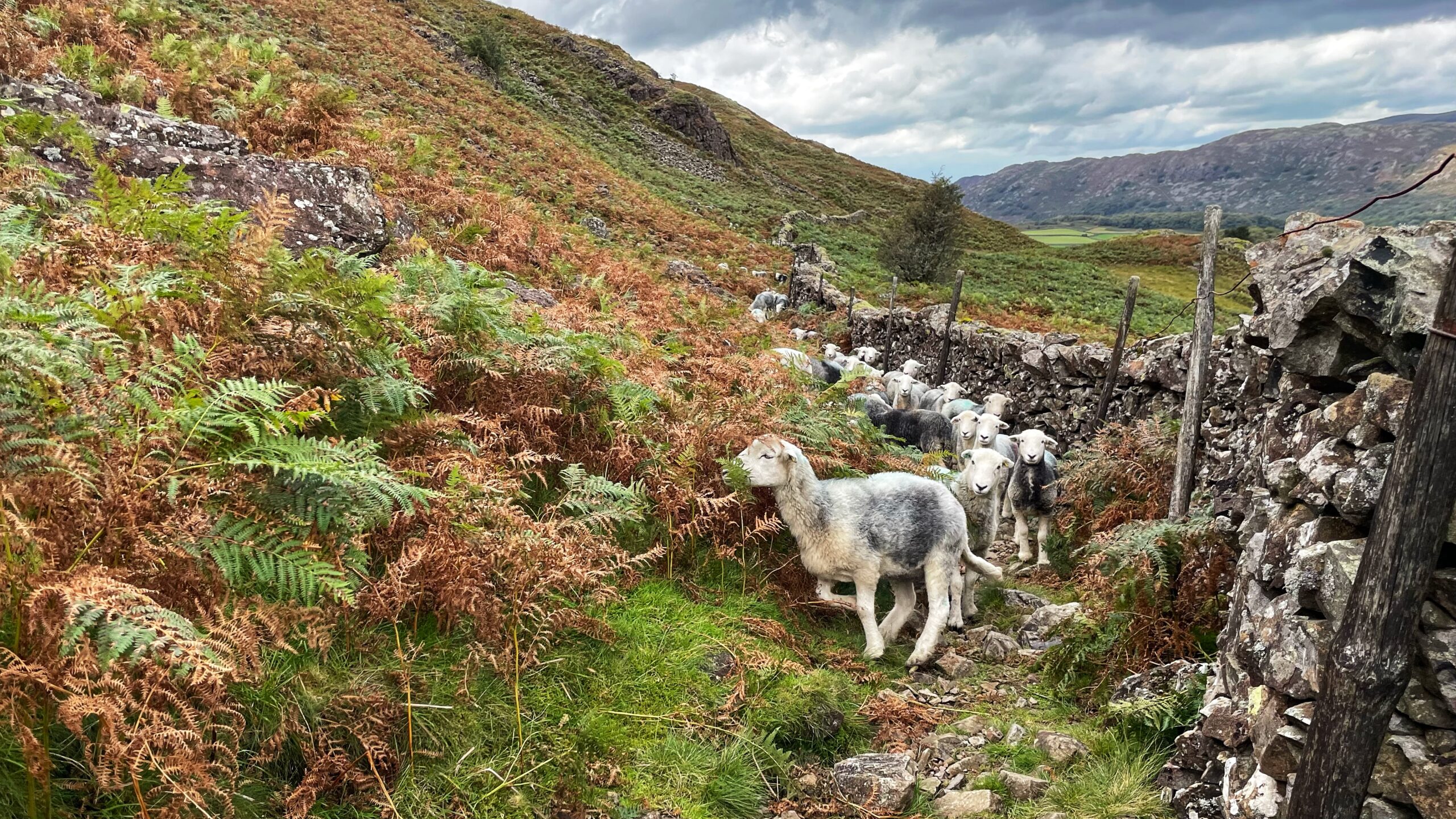A stand-off on the path below Harter Fell. The lead yow stood her ground until I raised the camera, then broke into a dash that set the rest of the flock thundering up the fell.
The Lakes is quintessential sheep country, and the sheep that defines it is the Herdwick. Wiry and stubborn, they seem as much a part of the fells as the rock and bracken. They thrive where little else would, clinging to slopes and scraping a living from the barest pasture.
Their bloodline is said to run back to the Vikings who settled Cumbria’s coast. These were Norwegians, not Danes, reaching the shore by way of the Orkneys, Dublin, and the Isle of Man.
The name Herdwick is thought to come from the Old Norse “herdvyck,” once meaning land under a ‘herd’ or shepherd’s care, later a pasture for sheep. Farms taking on such flocks became known as Herdwicks: districts of the herds.
These yows were heading back up the fell, where they will stay for a month before being regathered and brought back down for tupping. Or should that be tipping? Rams are tups in some parts of Cumbria, tips in others.

Leave a Reply